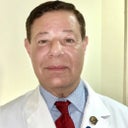Subcision can be effective for permanently elevating depressed scars of various types, including traumatic scars, those resulting from surgery, and infection-related. Subcision is a procedure in which a sterilized needle is inserted, following the administration of local anesthesia, directly beneath a depressed scar (regardless of whether from acne, infection, trauma, or surgery) and used to break up the thick bands of fibrous scar tissue that bind down the surface and create the depression.Breaking up the abnormal bands of thickened, scar collagen accomplishes two things. First, it allows the surface of the scar to float to the surface. In addition, the tissue fluid that immediately fills the space following treatment contains growth factors and other wound healing substances that promote neocollagenesis, native collagen production, that allows for improvement and elevation of the scars. Between two to four treatments, spaced at six week intervals, are generally required to promote sufficient new collagen to achieve a satisfactory improvement. Since, the collagen produced is one's own, the results of subcision are typically permanent.Fractional microneedle therapy aka medical microneedling works by creating numerous areas of controlled microwounding that set off in turn a cascade of events that result in new, native collagen synthesis, which translates into healthier, thicker skin that improves the appearance of the underlying scars. It is particularly useful for improving the surface tone and texture of skin to enhance blending with the surrounding normal skin. To date, I have unfortunately been less than impressed with the results of fractional lasers despite the media hype they have received.The injection of a stimulatory filler(s), such as Radiesse or Radiesse combined with Perlane L (in my Upper East Side Manhattan practice.) or Radiesse combined with Restylane SQ (my Israel office) can not only lead to immediate lifting of the scar and smoothing of its surface, but can further enhance new native collagen synthesis (neocollagenesis) about two months afterward.I believe that the additional use of a neuromodulator, such as Botox, Dysport, or Xeomin in this particular case would serve two purposes. One obvious benefit would be to alleviate some of the pronounced "worry line" wrinkling that is obvious with expression in the photo. However, at least as importantly, by suppressing some of the movement, the scar would be allowed to heal from the above treatments with less stretching and distortion, which ultimately translates long-term into a better overall cosmetic result.Of course, consultation with a board certified aesthetic physician who is skilled and experienced in all these modalities is an absolute must.


